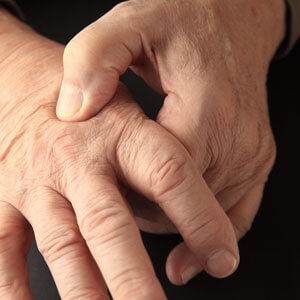 Osteoarthritis also referred to as ‘OA‘ is an inflammatory condition that affects many people. This inflammatory condition lead to pain, stiffness, and decreased mobility and movement in affected joints. While it might seem counterintuitive to stay active when you are experiencing this pain – research shows that exercise is a great tool to manage osteoarthritis and also has many other additional benefits too! Let’s explore how exercise can benefit those living with OA and provide some tips if your looking to start your movement journey.
Osteoarthritis also referred to as ‘OA‘ is an inflammatory condition that affects many people. This inflammatory condition lead to pain, stiffness, and decreased mobility and movement in affected joints. While it might seem counterintuitive to stay active when you are experiencing this pain – research shows that exercise is a great tool to manage osteoarthritis and also has many other additional benefits too! Let’s explore how exercise can benefit those living with OA and provide some tips if your looking to start your movement journey.
When you perform exercise there is a rush of endorphins and ‘feel good‘ hormones to the brain, not only do they increase the ability to learn and function they also reduce the feeling of pain and also reduces inflammation which is a key driver of OA. The performance of specific exercises mobilises and strengthens muscles surrounding joints which improves joint range of motion, stability, strength and function. This increase in strength in the muscles that attach onto and surround the affected joint not only increases support, it also reduces the load and stress experienced when moving and performing more demanding tasks then your body is used to. This makes it easier to walk to your favourite cafe to meet you friend, or head for a cycle with your son.
Tips for Exercising with Osteoarthritis
- Start low: If your beginning exercise for the first time in quite a while, start low and progress slow. Give time for your body to get used to performing scheduled movement again!
- Warm up and cool down: Warming up and cooling down allow your body to prepare for exercise and recover following, consequently reducing the chance of injury.
- Listen to your body: It is normal to experience a small amount of muscle soreness following exercise and potentially a slight discomfort while moving (this should stop when you stop moving). However, if you experience any abnormal pain during/following exercise stop and consult a healthcare professional such as an exercise physiologist.
- Stay Consistent: If there was a pill that contained all of the benefits of exercise it would forever unavailable. Unlike a pill that works shortly after being taken – it can take up to three to four weeks to notice any significant changes in strength, so stay consistent and keep going, it’s worth it!
- Consult with professionals: If you aren’t sure to start and have other conditions that impact the way you can exercise, seek the guidance of an allied health professional such as an exercise physiologist.
We hope this has provided you with information how exercise can be utilised as a tool to help with osteoarthritis. If you are looking to begin exercising for the first time or looking to being again after a long time period we encourage you to consult a medical professional (your GP) before beginning any new form of exercise and work with an allied health professional such as an exercise physiologist.
Here at Vitality Semaphore we have Accredited Exercise Physiologist Jasmine Faddy who is passionate about using exercise as medicine to help you be your best self. To find out more visit vitalitysempahore.com.au or ring our clinic phone on (08) 8242 1581.
CONTACT US »
